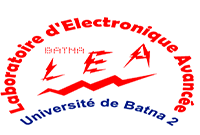Citation:
Abstract:
The development of CZTS-based solar cells is limited by two factors, the low open circuit voltage and the conversion efficiency. This is why, in this study, the impact of Cu2ZnSnS4 (CZTS) absorber thin layer parameters on the performance of the proposed MoS2/CZTS/CdS/ZnO heterostructure is simulated by the standard software SCAPS-1D. The improving output performances of this structure; the open circuit voltage (Voc), the short circuit current density (Jsc), the fill factor (FF) and the efficiency (h) are obtained by varying the absorber layer thickness, acceptor carrier concentration NA and taking into account the effect of the electron work function of the back metal contact. The optimized cell provides an energy conversion efficiency of 15.23% (Voc = 0.99 V, Jsc = 21.89 mA/cm2, FF = 69.79%) for an optimal thickness of 2 μm, a doping of 1×1016 cm-3. Performance enhancement of the proposed solar cell is subject to the back metal contact, the optimal simulated value of 5.7 eV of which represents that of the Platinum’s work function Pt. The interest of this simulation makes it possible to adjust the solar cells dimensions, optimize the absorbent layers doping, choose appropriately the back metal contact and therefore help to considerably reduce the various recombination phenomena as well as the secondary phases.
